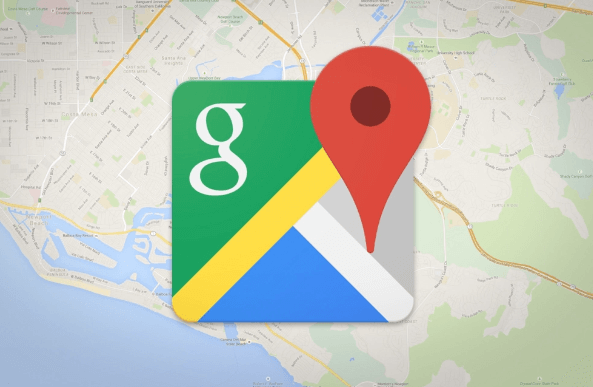On March 27, Google Maps announced an upcoming update that uses artificial intelligence (AI) technology to improve trip planning for users.
This week, over 40 cities across the US and Canada will gain access to new features that will empower you to find exciting places to visit.
This update introduces three key features aimed at streamlining the process of discovering new places.
Let’s explore how these features can enhance your travel planning experience.
Table of Contents
What is Google Maps?
Google Maps is a digital mapping service that offers precise maps, satellite photos, street views, and real-time traffic conditions for sites all around the world. Developed and maintained by Google, it offers an easy and intuitive way to explore new places, get directions, and find local businesses and landmarks. With its user-friendly interface and powerful features, Google Maps has become an essential tool for people worldwide who need to navigate unfamiliar areas or plan trips. Whether looking for a specific address, checking traffic conditions, or just exploring the world from your computer screen, Google Maps is a powerful and reliable resource.

Google Maps gets smarter with AI
With Google’s AI-powered Maps, you can quickly understand a place and its highlights.
Simply pull up a location on Maps and you’ll find short summaries of what people liked about it, such as a restaurant’s renowned tacos or the relaxed bar atmosphere.
While browsing food photos at a restaurant, AI can identify the dishes and offer menu details such as pricing, popularity, and dietary options like vegetarian or vegan choices.
This assists in making an informed decision about whether to make a reservation or not.

how Google Maps is leveraging AI to become a smarter and more helpful tool for navigating the world:
Enhanced Navigation with AI:
- Real-time Traffic Flow and Route Optimization: AI analyzes real-time traffic data to suggest the fastest or most efficient routes, saving you time and frustration.
- Multimodal Trip Planning: Considering your preferences, AI can combine driving directions, public transport options, cycling routes, or even walking paths to create the most convenient itinerary for your specific journey.
AI for a More Personalized Experience:
- Predictive Recommendations: Based on your search history, past commutes, and even time of day, AI can anticipate where you might be headed and suggest relevant shortcuts, nearby gas stations, or coffee shops along your route.
- Landmark and Business Information: Point your phone’s camera at a building, and AI can use image recognition to identify the landmark or business, providing information like opening hours, reviews, or historical background.
Safety and Situational Awareness:
- AI-powered Incident Detection: Real-time analysis of traffic data and user reports can help identify accidents, road closures, or other disruptions, allowing you to reroute and avoid potential delays.
- Safer Cycling Routes: AI can prioritize routes with dedicated bike lanes, low traffic volumes, or good road conditions, promoting safety for cyclists.
AI for Exploration and Discovery:
- Search with Live View: Using your phone’s camera and AI object recognition, you can discover restaurants, shops, or points of interest in your vicinity simply by pointing your camera in that direction.
- AI-powered Local Guides: Imagine having a virtual guide with you! Leverage AI to discover hidden gems, trendy hotspots, or culturally significant places based on your interests and recommendations from other users.
Looking Ahead:
- Hyper-personalized Maps: As AI gets more sophisticated, Google Maps could become even more personal, tailoring suggestions and information to your unique preferences and past behavior in even greater detail.
- Integration with Smart Cities: Imagine Google Maps seamlessly connecting with smart city infrastructure, providing real-time data on parking availability, electric vehicle charging stations, or even dynamic traffic light wait times.
Finding inspiration
Google is trying out a new AI feature in Search. It makes sample travel plans when you search for trip ideas.
These plans include flights, hotels, things to do, and places to eat, all suggested by AI. You can save them to Gmail, Docs, or Maps for easy planning.
This feature is still being tested, but it could change how we plan trips.
Google is also inviting users to submit their own curated lists on listnominations@google.com, for the opportunity to be included within the app.
AI powered trip lists
Have you ever created a long list of places to visit, only to forget about many of them when you arrive?
Users can now create and personalize lists, while AI analyzes photos and reviews to provide quick summaries of what makes each place special.
You can organize them chronologically to plan the perfect itinerary or rank them based on your preferences after your visit to create an “best of” list.
The ability to link social media content to your lists, such as a review you wrote about a fantastic meal, will also be included in this update. This lets you showcase why a particular place deserves a spot on your list.
The update is scheduled for a global launch on Android and iOS devices by the end of the month.
AI-powered trip lists are revolutionizing travel planning by leveraging the power of artificial intelligence to create personalized and optimized itineraries. Here’s a breakdown of how AI is transforming travel experiences:
Understanding Your Preferences:
- Machine Learning: AI algorithms analyze your past travel behavior, browsing history, and social media activity to understand your interests, preferred travel styles (luxury, adventure, budget), and desired experiences.
- Customization: Unlike one-size-fits-all itineraries, AI tailors trip lists to your specific needs and preferences. Imagine an adventure-seeker getting recommendations for thrilling hikes, while a history buff receives suggestions for museums and cultural landmarks.
Optimizing Your Itinerary:
- Smart Scheduling: AI considers travel time, location proximity, opening hours, and even weather forecasts to create a seamless and time-efficient itinerary. No more backtracking across the city or missing out on must-see sights due to limited hours.
- Hidden Gems and Local Insights: AI goes beyond popular tourist destinations. It can unearth unique local experiences, hidden gems recommended by past travelers, and off-the-beaten-path adventures based on your interests.

AI-powered Features for Different Stages of Trip Planning:
- Inspiration and Brainstorming: Stuck on where to go? AI can suggest destinations based on your preferences, current travel trends, and even budget constraints. It can spark new ideas and help you discover hidden corners of the world.
- Logistics and Booking: Some AI travel planners integrate with booking platforms, allowing you to reserve flights, hotels, and activities directly from the app. This streamlines the planning process and saves you time.
Real-time Updates and Flexibility:
- Dynamic Itineraries: AI can adjust your itinerary on the fly based on real-time factors like weather changes, unexpected closures, or even new events happening during your trip. This ensures you don’t miss out on spontaneous adventures or have to scramble due to unforeseen circumstances.
Things to Consider:
- Data Privacy: Be mindful of the data you share with AI travel planners. Ensure they have strong privacy policies and understand how your information is used.
- Human Touch: While AI offers valuable assistance, it shouldn’t replace the human element of travel planning. Use AI as a tool, but don’t be afraid to add your personal touch and explore beyond the suggested recommendations.
A fresh look at Google Maps
Besides AI, Google is also improving Maps in general with fresh design updates, providing the platform with a modern and updated appearance.
It remains to be seen whether this makeover truly simplifies navigation or simply adds a fresh coat of paint.
Overall, these updates aim to transform Google Maps into a more comprehensive trip planning and exploration tool, potentially streamlining the process from initial inspiration to creating a smooth travel experience.

Will these new features make Google Maps your go-to app for trip planning?
Here’s a fresh look at Google Maps, exploring its potential for new features and areas of development:
Emerging Technologies and Integrations:
- Augmented Reality (AR): Imagine using AR while walking or cycling to see directions and information about your surroundings overlaid on your phone’s screen. This could revolutionize navigation, especially for pedestrians.
- Real-time Transit Integration: Live updates on delays, disruptions, and best routes for public transportation could make using Google Maps for commuting even more efficient.
- Hyper-local Information: Imagine searching for a specific type of local business, like a family-run bakery or a vintage clothing store, and Google Maps curating the perfect recommendations based on user reviews and local insights.
- Environmental Impact Data: Providing users with insights into the carbon footprint of different travel routes (driving vs cycling) could encourage eco-friendly choices.
Focus on User Needs and Personalization:
- Curated Experiences: Tailored recommendations for places to eat, visit, or shop based on user preferences, past behavior, and real-time trends. Imagine Google Maps suggesting a scenic route for your afternoon drive or a hidden gem based on your love for vintage bookstores.
- Accessibility Features: Improved accessibility options for people with disabilities, including better integration with screen readers and comprehensive information about wheelchair-accessible routes and locations.
- Offline Functionality: Enhanced offline features allowing users to access maps and basic navigation even without an internet connection.
Looking Ahead:
- Smart City Integration: Google Maps could potentially connect with smart city infrastructure, providing real-time data on traffic flow, parking availability, and even electric vehicle charging stations.
- The Future of Transportation: As self-driving cars and other autonomous vehicles become a reality, Google Maps could play a crucial role in providing navigation data and route optimization for these new modes of transportation.
Overall, Google Maps has the potential to evolve beyond just a navigation tool. By embracing new technologies, personalizing the user experience, and integrating with other services, Google Maps can become a comprehensive platform for exploring the world, making informed travel decisions, and navigating our ever-changing environment.
Disclaimer ||
The Information provided on this website article does not constitute investment advice ,financial advice,trading advice,or any other sort of advice and you should not treat any of the website’s content as such.
Always do your own research! DYOR NFA
Coin Data Cap does not recommend that any cryptocurrency should be bought, sold or held by you, Do Conduct your own due diligence and consult your financial adviser before making any investment decisions!





Leave feedback about this